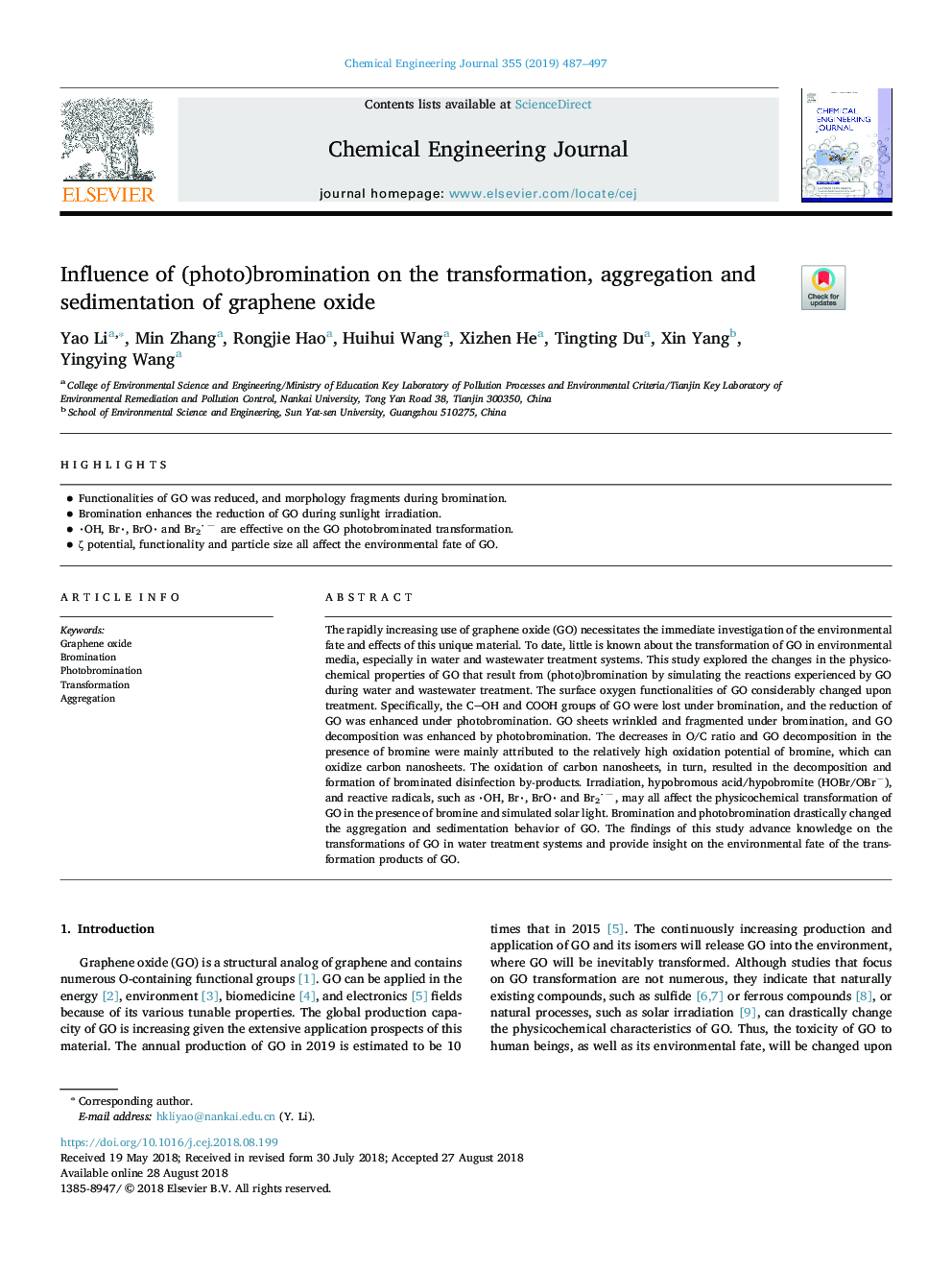| Article ID | Journal | Published Year | Pages | File Type |
|---|---|---|---|---|
| 10130878 | Chemical Engineering Journal | 2019 | 11 Pages |
Abstract
The rapidly increasing use of graphene oxide (GO) necessitates the immediate investigation of the environmental fate and effects of this unique material. To date, little is known about the transformation of GO in environmental media, especially in water and wastewater treatment systems. This study explored the changes in the physicochemical properties of GO that result from (photo)bromination by simulating the reactions experienced by GO during water and wastewater treatment. The surface oxygen functionalities of GO considerably changed upon treatment. Specifically, the COH and COOH groups of GO were lost under bromination, and the reduction of GO was enhanced under photobromination. GO sheets wrinkled and fragmented under bromination, and GO decomposition was enhanced by photobromination. The decreases in O/C ratio and GO decomposition in the presence of bromine were mainly attributed to the relatively high oxidation potential of bromine, which can oxidize carbon nanosheets. The oxidation of carbon nanosheets, in turn, resulted in the decomposition and formation of brominated disinfection by-products. Irradiation, hypobromous acid/hypobromite (HOBr/OBrâ), and reactive radicals, such as OH, Br, BrO and Br2â, may all affect the physicochemical transformation of GO in the presence of bromine and simulated solar light. Bromination and photobromination drastically changed the aggregation and sedimentation behavior of GO. The findings of this study advance knowledge on the transformations of GO in water treatment systems and provide insight on the environmental fate of the transformation products of GO.
Related Topics
Physical Sciences and Engineering
Chemical Engineering
Chemical Engineering (General)
Authors
Yao Li, Min Zhang, Rongjie Hao, Huihui Wang, Xizhen He, Tingting Du, Xin Yang, Yingying Wang,
